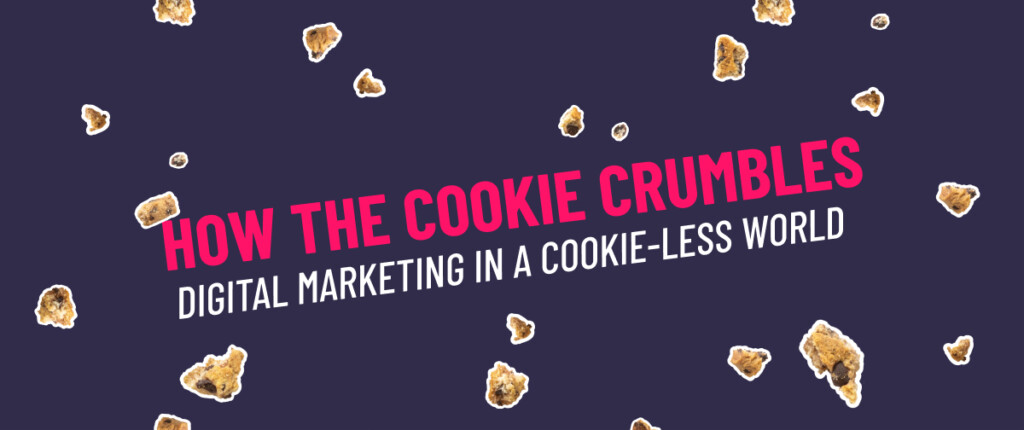
Google’s decision to eliminate cookies by the end of 2024 has sent ripples across the digital marketing landscape. Many digital advertising strategies, including paid search, paid social media, OTT/CTV, and targeted display advertising, currently utilize cookies to maximize the effectiveness of digital advertising campaigns. While digital advertising isn’t going away, advertisers and vendors will need to adapt to the changing environment.
A shift of this magnitude is bound to have implications for businesses and users alike, and it’s important to understand what these changes mean for the industry. In this article, we’ll delve into the background of cookies, Google’s announcement, and what the end of cookies could mean for the future of digital advertising.
What’s the Deal With Cookies?
What Are Cookies?
Before we get into the potential impact of removing cookies, let’s first define what cookies are. Cookies are small pieces of data stored on a user’s device by the websites they visit. These data allow websites to remember information about the user, such as their login credentials and browsing history. This data exchange can then provide a more personalized and convenient browsing experience for users.
How Do Cookies Work?
When a user visits a website for the first time, the site creates a unique identifier known as a cookie. This cookie is then stored on the user’s device and contains specific information about their browsing session. The next time the user visits that same website, their browser sends the cookie back to the site’s server along with their request. This allows the website to recognize the user and provide personalized content based on their previous interactions.
Cookies also have an expiration date, meaning they will eventually be deleted from the user’s computer. Some cookies only last for one browsing session, while others can remain on the computer for months or even years. This allows websites to track a user’s behavior over time and gather data about their interests and preferences, which can influence everything from the ads they are served to fraud prevention and how users interact with websites.
Google’s Cookie Phase-Out
Google’s announcement about the end of third-party cookies in Chrome has marked a pivotal moment in digital marketing. Chrome currently accounts for over 63% of the Internet browser market share. And, that number goes up even further when you account for Chromium-based browsers. This is why it’s safe to assume that any major changes Google implements through Chrome and Chromium-based browsers will have a significant impact on the digital landscape, including digital marketing.
Google’s 3rd-party cookie elimination plan aims to enhance user privacy and provide a more secure online experience. The roll-out involves disabling third-party cookies for a small percentage of Chrome users and gradually increasing that number over the course of a year.
In early 2024, Google initiated the first phase of its plan by restricting third-party cookies for 1% of users as part of its Privacy Sandbox initiative. In Q3 of 2024, Google plans to roll out third-party cookie tracking restrictions to 100% of its users, marking a complete transition to a cookieless browsing experience.
How the Industry Is Reacting to Google’s Plans
Simplifi: Charting a Cookieless Course
In anticipation of Google’s decision, Simplifi has been testing alternatives to cookies to get ahead of potential disruptions. An expansion of integration with data partners like LiveRamp and Intent IQ, coupled with a focus on first-party data and cross-device matching, forms the cornerstone of Simplifi’s strategy.
The Trade Desk: Embracing Change With Unified 2.0
Unified 2.0 (UID2), initiated by The Trade Desk, exhibits how the industry is turning challenges into opportunities. This user identification system, based on authenticated logins and email matching, benefits from the requirement of sign-ins in app environments. By leveraging existing data points, The Trade Desk aims to set a new standard in a world without cookies.
Meta: Prioritizing Transparency and First-Party Data
Meta underscores the importance of collecting and leveraging first-party data, emphasizing transparency in the data-gathering process. The company suggests embracing privacy-resilient methods to activate, optimize, and measure marketing, demonstrating a forward-thinking approach to the impending changes.
TikTok: Leveraging Partnerships for Measurement
TikTok, in collaboration with Dentsu Digital, is integrating its Events API into Dentsu Digital’s cookie-independent X-Stack Connect platform. X-Stack Connect is a server-side measurement platform that enables advertisers to examine consenting users’ online behaviors on websites via server-side access logs.
Google: Striking a Balance With Privacy Sandbox and Topics API
Google isn’t resting on its laurels either. The tech giant is developing the previously mentioned Privacy Sandbox as well as Topics API, with both aimed at replicating cookie-based behavioral targeting. The Protected Audience API assigns users to pre-defined interest groups to deliver personalized advertising with enhanced privacy measures.
Adapting to Change With Caution and Optimism
While the elimination of cookies shouldn’t be a surprise, the transition to cookieless marketing might have its share of bumps in the road. But, with the development of alternative methods like those previously mentioned, there is hope for a better balance between personalized advertising and privacy-focused marketing strategies.
Many marketers may be scared of tossing their cookies right now, but others will adapt and find new ways to reach their target audiences. Whatever comes next, Gatorworks will be following the latest industry trends and technologies to deliver optimal results for our clients. Reach out to us online or call 225-924-6109 to see how we can help you take your digital marketing campaigns to new heights — with or without cookies.